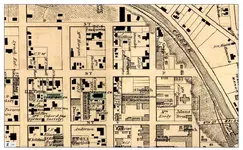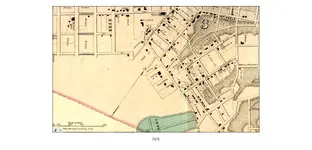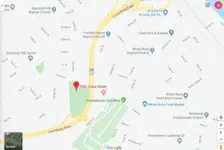ECS
Banned
- Joined
- Mar 26, 2012
- Messages
- 11,638
- Reaction score
- 17,695
- Golden Thread
- 0
- Location
- Ocala,Florida
- Primary Interest:
- Other
- #181
Thread Owner
Showing your true nature. You got another one, huh.
...and your point?
Showing your true nature. You got another one, huh.
...and your point?
The only two events than can be verified in the Beale story narrative is the location where Sarah Mitchell Morris and Robert Morris passed away, and possibly that Max Guggenheimer, ESQ lived at Morris's Main Street residence in 1885.When one researches James Beverly Ward's extended family, Risqué, Hutter, Kennerly, Hancock, Sherman, as well as his wife Harriet's to Buford, Otey, Morris, Mitchell, the source material for the locations and some of the names in the Beale Papers become apparent through the literary constructed ambiguity of the job print pamphlet.
Diamond Hill, probably......and in 1885, did Max Guggenheimer actually reside at the former home of Robert Morriss on Main Street or at the Diamond Hill house on Grace Street?
Are there Lynchburg property tax records that confirm that Max Guggenheimer's 1885 residence was Grace Street in the Diamond Hill District.Diamond Hill, probably...
Are there Lynchburg property tax records that confirm that Max Guggenheimer's 1885 residence was Grace Street in the Diamond Hill District.
Franklin, will you please post a link to that Nov 2017 post?

Title of that "thread"...?Don't know how? You can google Max G. and it will come up on a treasurenet link. Here is Grey's 1877 Map I posted on the Link maybe it will help you find it?View attachment 1775817
Title of that "thread"...?
Question:Grey's 1877 Map
View attachment 1775817
COULD BE! Come & LOOK!Question:
It seems that the darkened buildings are residences and those with lines (Adams Bros for example) are businesses and warehouses.
The buildings with Max Guggenheiner Jr on Fifth and Main have the lines of businesses and warehouses.
https://www.gravegarden.org/confederate-hospitals-in-lynchburg/
The above site has a map of the hotels and homes utilized as hospitals during the 1861-1865 War of Northern Aggression.
On this map, which was made into a Lynchburg historical marker has Fifth and Main on the left side on the map, where the 1877 Grey's has these streets on the right side of the map, which makes comparison confusing.
The buildings on Fifth and Main on the Confederate hospital map are the PLANTERS HOTEL and Lucy Mina Otey's Ladies Relief Hospital, and the Washington Hotel is on Eighth and Main.
*NOTE* Lucy Mina Otey was the aunt of Harriet Ward, James Beverly Ward's wife.
Neither map are solid confirmation of Max Guggenheimer's residence on Main Street.
Are there existing tax and/or property records from 1885 that could finally conform the statement in the Beale Papers?
THANKS! FOUND IT!The house now owned and occupied by Max Guggenheimer ESQ
Are you able to post the Diamond Hill section that shows 1902 Grace Street on Grey's 1877 map?... Here is Grey's 1877 Map
View attachment 1775817
Diamond Hill...? FULL of old homes, "OLD" $$$$$$$$$$$$...Are you able to post the Diamond Hill section that shows 1902 Grace Street on Grey's 1877 map?
...and possibly the legend that explains the various markings?
Are you able to post the Diamond Hill section that shows 1902 Grace Street on Grey's 1877 map?
...and possibly the legend that explains the various markings?


